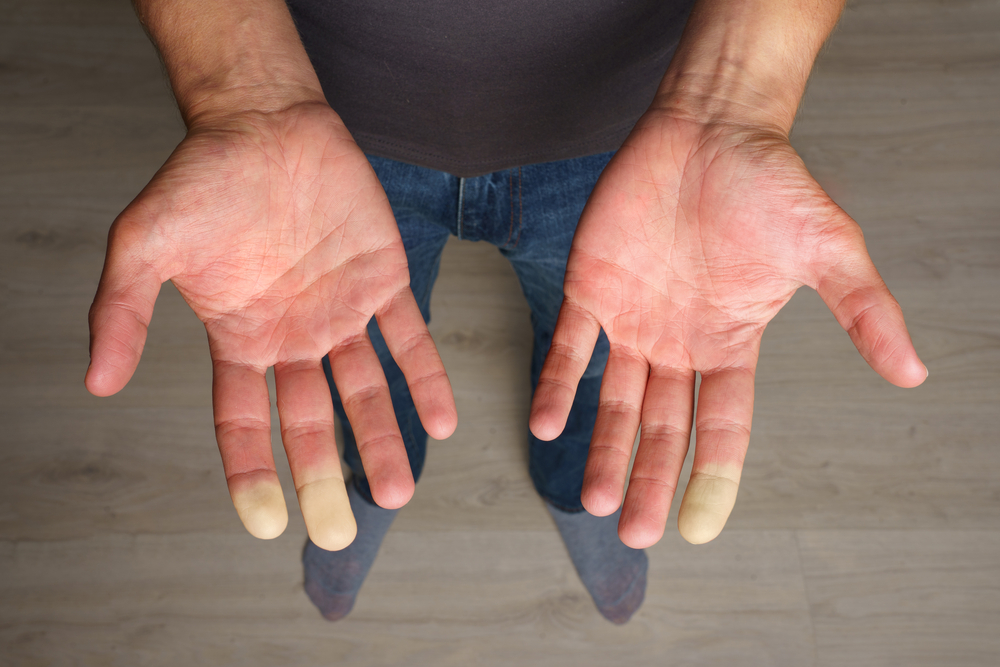Raynaud’s phenomenon, also known as Raynaud’s syndrome or Raynaud’s disease, is a condition that affects the blood vessels in the fingers, toes, ears, and nose. This condition causes these extremities to feel cold and numb, and the skin may turn white or blue in response to cold temperatures or emotional stress. In this essay, we will discuss the causes, symptoms, diagnosis, and treatment of Raynaud’s phenomenon.

The exact cause of Raynaud’s phenomenon is unknown, but it is believed to be caused by an abnormal narrowing of the blood vessels in response to cold temperatures or emotional stress. This narrowing reduces the blood flow to the affected areas, which can cause the skin to turn white or blue. When the blood vessels widen again, usually after the affected area is warmed up, the blood flow returns and the skin may turn red and throb or tingle.
There are two types of Raynaud’s phenomenon: primary and secondary. Primary Raynaud’s phenomenon is also called Raynaud’s disease, and it occurs without any underlying health conditions. Secondary Raynaud’s phenomenon occurs in conjunction with other medical conditions, such as lupus, scleroderma, or rheumatoid arthritis. Secondary Raynaud’s phenomenon is often more severe than primary Raynaud’s phenomenon.
The symptoms of Raynaud’s phenomenon include cold and numb fingers, toes, ears, or nose. The affected areas may also turn white or blue in response to cold temperatures or emotional stress. When the blood flow returns, the skin may turn red and throb or tingle. In severe cases, the affected areas may develop sores or ulcers.
Diagnosing Raynaud’s phenomenon typically involves a physical exam and a review of the patient’s medical history. The doctor may also perform tests to rule out other conditions, such as nerve damage or carpal tunnel syndrome. If the doctor suspects that the patient has secondary Raynaud’s phenomenon, they may order blood tests or imaging studies to check for underlying medical conditions.
Treatment for Raynaud’s phenomenon depends on the severity of the symptoms and the underlying cause. In mild cases, lifestyle changes such as avoiding cold temperatures, wearing warm clothing, and quitting smoking may be enough to reduce symptoms. In more severe cases, medications such as calcium channel blockers or alpha blockers may be prescribed to help widen the blood vessels and improve blood flow.
Raynaud’s phenomenon is a condition that affects the blood vessels in the fingers, toes, ears, and nose. It causes these areas to feel cold and numb, and the skin may turn white or blue in response to cold temperatures or emotional stress. While the exact cause of Raynaud’s phenomenon is unknown, it is believed to be caused by an abnormal narrowing of the blood vessels. Treatment for Raynaud’s phenomenon depends on the severity of the symptoms and the underlying cause, and may involve lifestyle changes or medications. If you are experiencing symptoms of Raynaud’s phenomenon, it is important to talk to your doctor to receive an accurate diagnosis and appropriate treatment.
